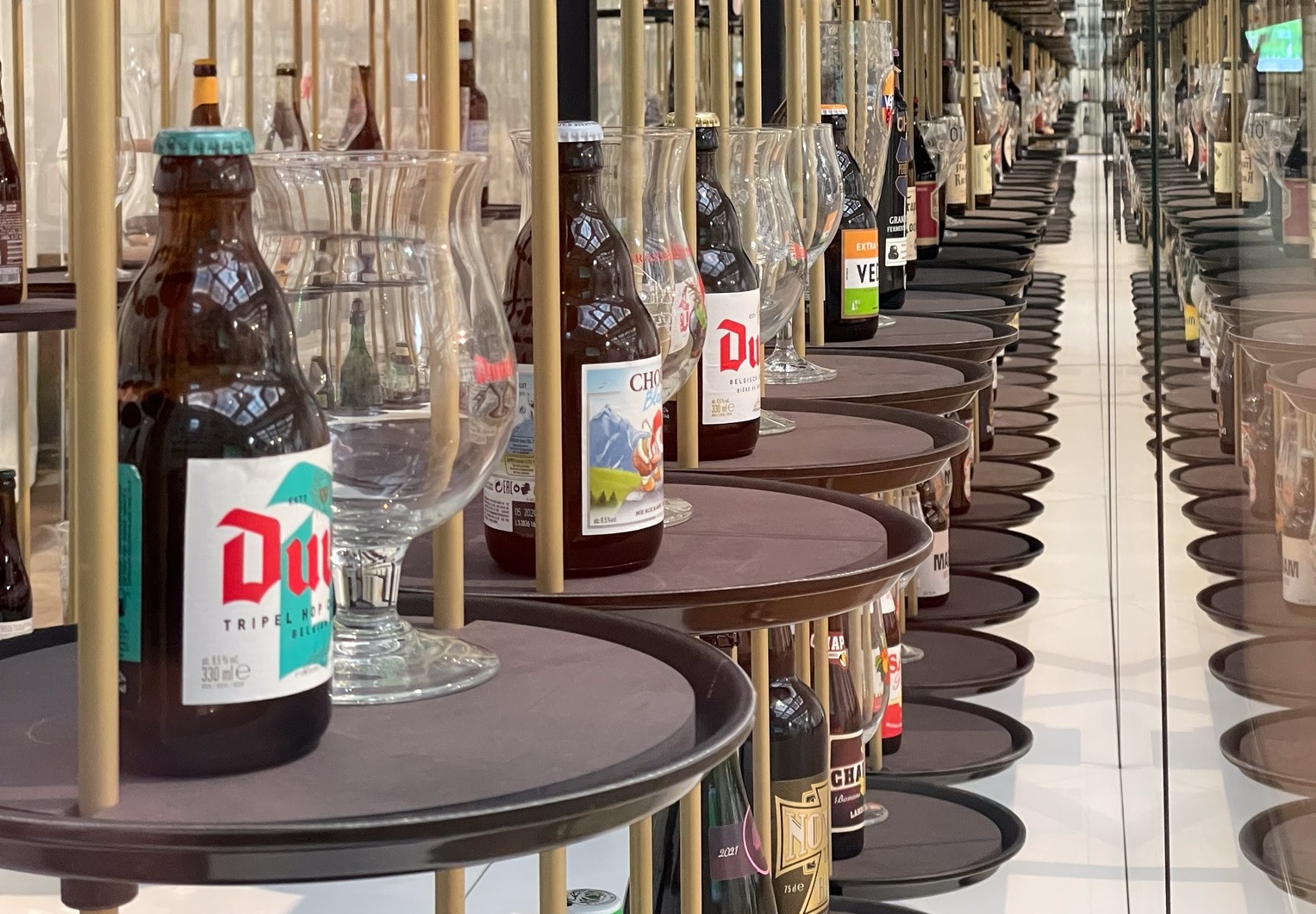In 2011, a 35-year-old consultant from Ghent named Krishan Maudgal was asked to write a feasibility study on creating a Belgian beer experience centre in the iconic Bourse building in Brussels.
A preliminary needs study had been carried out by Sven Gatz, a Brussels Flemish politician and former Director of the Belgian Brewers Federation. That initial study had looked at other buildings, including the old Belle Vue brewery site along the Brussels Canal. But a new feasibility study was needed when the Bourse – no longer operating as a stock exchange – became available.
The more Maudgal looked into it, the more challenges he found: the huge costs would require a robust public-private partnership; there would be a long and varied list of strong-willed stakeholders with high and often contrasting expectations; and there would be architectural complexity in renovating one of the country’s most beloved buildings.
Maudgal wasn’t sure he should take on the study commission, having only just moved into consulting. He’d worked with Heineken’s Alken-Maes for almost ten years up to that point, most notably as the Marketing and Sales Manager of their abbey-style brand Grimbergen. “In the beginning, I thought the chances of success were less than 5%,” he says. “But then I said to myself, if everybody acts like an ostrich and puts his head in the ground, nothing will happen.” Hesitant, he accepted the commission.
Twelve years later, 47-year-old Krishan Maudgal is now the Director of the Federation of Belgian Brewers. He is also the Project Director of that beer experience centre, now open and christened Belgian Beer World. It opened on September 9 and aims to attract in the region of 400,000 visitors a year, numbers which would make it one of Brussels’ top tourist attractions, potentially drawing more visitors than the Atomium.
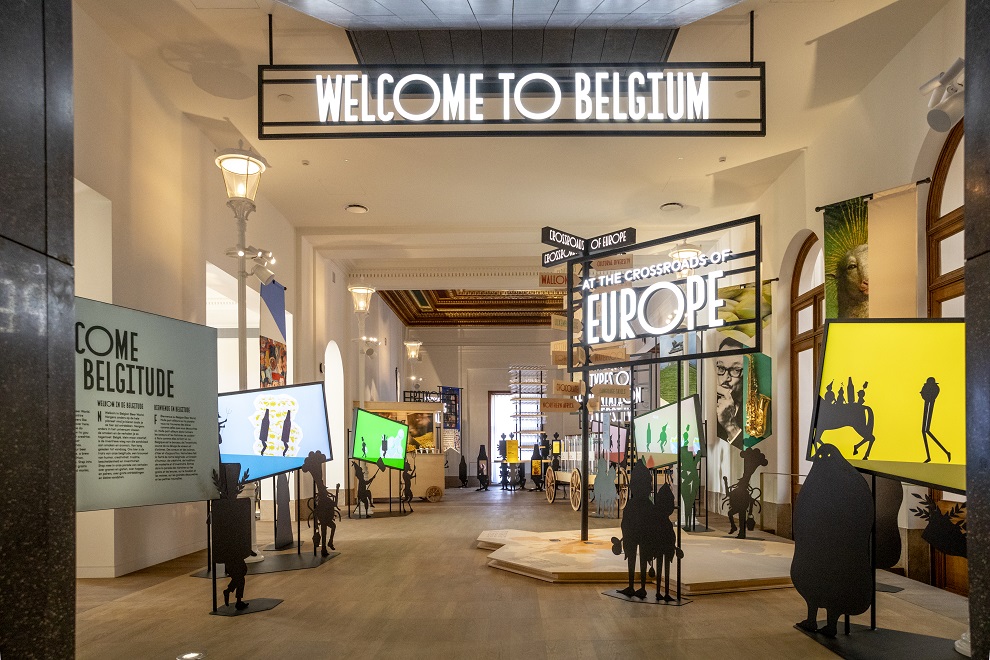
Displays in the Belgian Beer World
It follows the decision by UNESCO in 2016 to add Belgian beer culture to the list of the Intangible Cultural Heritage of Humanity, making Belgium the only country in the world with such recognition. The interactive museum sets out to celebrate the history, science, and diversity of Belgian beer. But for Krishan Maudgal and his team, it’s been a long and exhausting journey.
Going public
The process was slow-moving largely because this was a large-scale public-private partnership between Beliris, FEDER, Next Gen Belgium, the Brussels-Capital region and the city of Brussels, and a private group represented by 103 breweries. A separate steering committee was established for the project – the Régie Communale Autonome – a group of five non-elected officials including Maudgal, and six elected council officials.
A design tender launched in late 2014 starting years of consultative work – it was only in 2018 that the design was signed off – followed by another public tender, this time for the building works.
One of the key decisions taken at the outset was to create a generic beer environment as opposed to one which put specific brands of Belgian beer in the spotlight. There’s a ‘beer wall’ where bottles and glassware of various brands are displayed, but most of the exhibits in the museum celebrate Belgian beer as a generality and showcase beer history, culture, brewing science, and the theatre of service, all without mentioning particular brands.
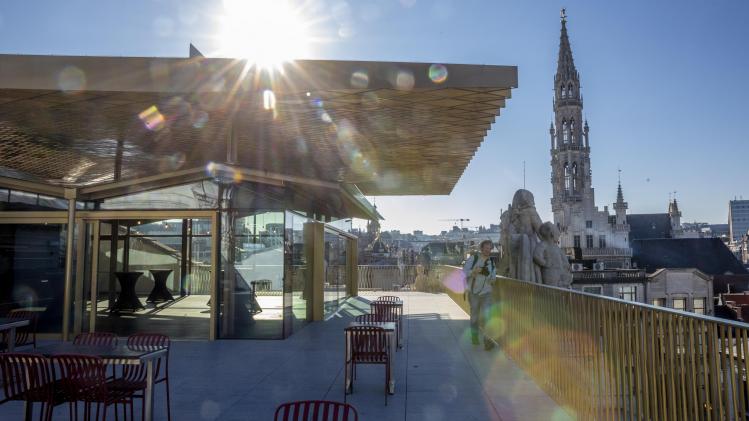
The rooftop terrace offers panoramic views of the city centre
“There was always discussion and debate,” he says, with investing brewers keen to ensure they would be more prominently showcased. “While 99% of the people were always very supportive and very positive and very constructive, there were also some others who were not.”
Another key design decision was to forego headsets, a popular museum tool in recent years. “We didn't want to have any audio guide whatsoever because beer is a social and convivial product,” Maudgal says. “When you have people with headphones on, it becomes a very personal and individual visitor experience. We want people to have a dialogue and exchange ideas whilst visiting Belgian Beer World.”
Interactive highlights include a four-metre-high projected brewer's head, virtual pouring lessons for different types of glassware, and an immersive fermentation ‘theatre’.
The interactive beer experience at Belgian Beer World is divided into six zones:
- Zone 1 is ‘Taste the Culture’, where visitors receive an introduction to ‘Belgitude’ and a history of beer.
- Zone 2 is ‘Discover Untold Stories’, where they walk through hop fields and discover the gruit library (the herb mix used for flavouring and bittering).
- Zone 3’s ‘Witness the Passion’ lets visitors meet the Belgian brewer.
- In Zone 4, ‘Reveal the Processes’, mashing and fermentation is explained.
- Zone 5, ‘Explore Your Tastes’, explains secondary processes, and with the guidance of virtual bartenders, visitors can discover their personal beer preferences.
- Zone 6 is ‘Inspire the World’, where visitors are invited to become Belgian beer ambassadors, before they finish their tour with a beer in the Sky Bar, overlooking the city.
Overbudget
The initial budget originally set aside for the beer museum project was €15 million, but the cost ballooned and is estimated today to be almost €100 million. Maudgal believes that this is largely related to the complexity of the renovation of the Bourse, a protected heritage building.
Built between 1868 and 1873 by architect Léon-Pierre Suys and showcasing Rodin sculptures, the Bourse’s 12,000 square metres is spread over five floors. At the end of the main hall is the entrance to Belgian Beer World’s exhibition. This area has been one of the most controversial aspects of the renovation.
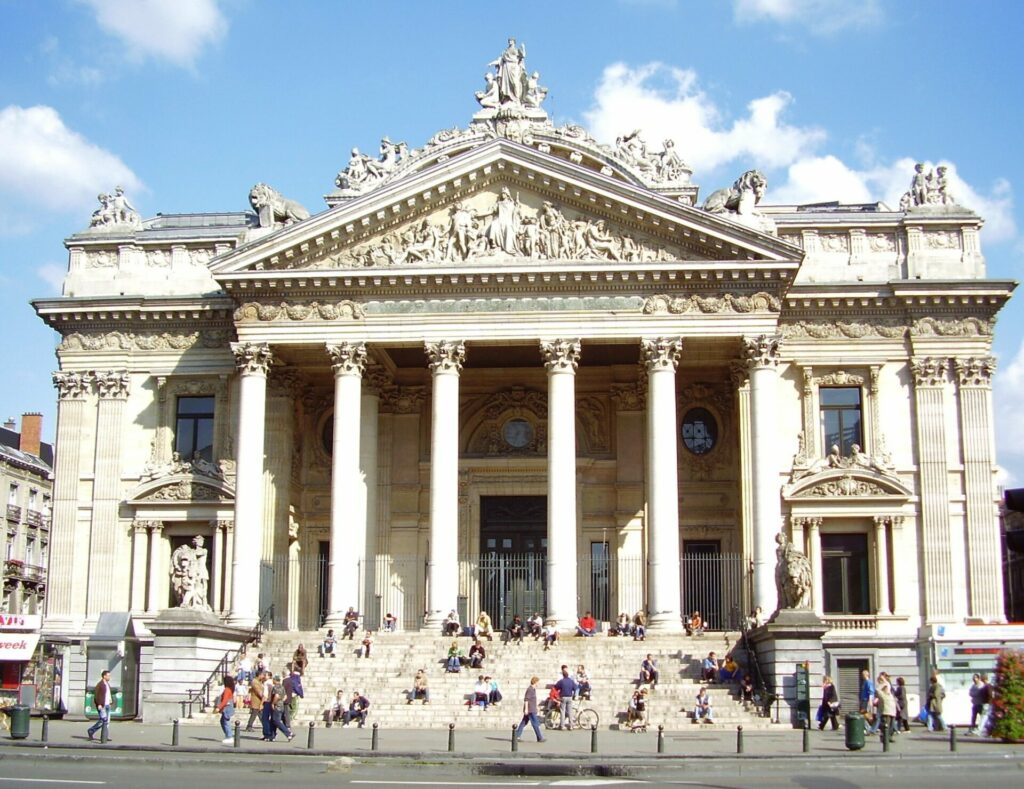
The Bourse building
Critics feel it’s an unnecessary use of important space, a design decision which urban activist organisation the Atelier de Recherche et d'Action Urbaine (ARAU) says disrespects the Bourse's heritage. ARAU argues that the Belgian Beer World project does not correspond to the building's original function to be a public amenity; rather, it serves today, they say, a more commercial and tourist function.
The Bourse building is as much a part of the experience of Belgian Beer World as any of the beer content or interactive exhibitions, with visitors making their way through mezzanines and along passerelles with varying perspectives and views. “It’s not only a journey through the subject of beer,” says Maudgal. “It's also a journey that allows you to discover a magnificent building.”
Beer Wall
However, complaints from brewers soon emerged after it opened. Brasserie de L’Ermitage are reported to have grumbled about the price, said to be €1,500, that Belgian Beer World charged breweries to display a bottle of beer and a glass in its “beer wall”.
Maudgal takes issue with these claims. “The way it has been presented now that you have to pay €1,500 and you only get one bottle in the beer wall is also not true,” he says. “The idea is that everybody should have a place. The smallest brewer who wants to participate can participate for €750 to be paid over three years, three times €250. In that way, you become for 15 years an official partner of the project as a brewer. So it's not only to have your bottle in the beer wall, but it's also a contribution to the entirety of the project.”
Another criticism levied is that not enough has been done to showcase Brussels breweries in a museum located in the city. Maudgal understands this but argues that the priority should be to promote Belgium rather than one city’s brewing heritage. “In that case, white beer from the region around Leuven should maybe also have its spot,” he says. “And then there’s Lambic and the Pajottenland area around Brussels. And then Flemish red-brown. I mean, what are we doing then? Then we are actually eroding the value of Belgian beer.”
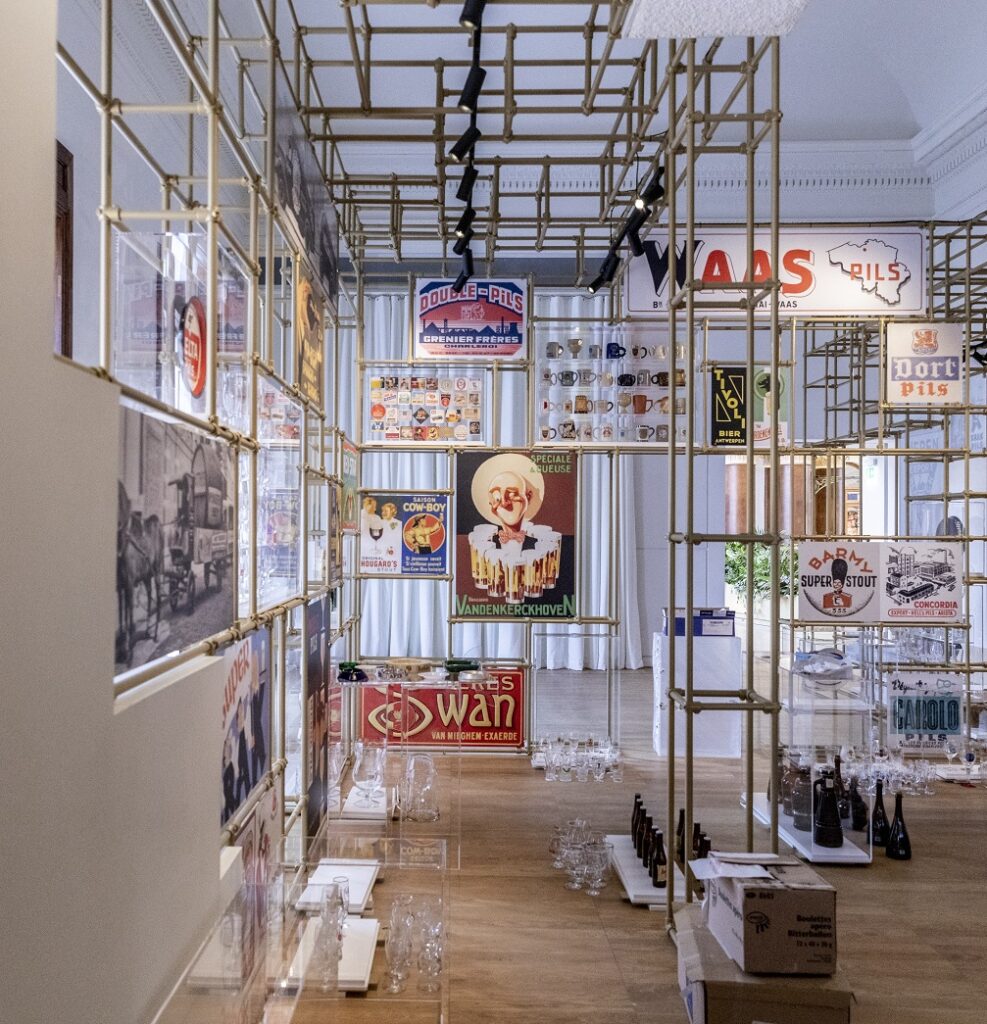
The historic beer brands
Maudgal often talks of Belgian beer as a brand. “In the US, or in China or in Japan, no single beer lover is considering that a beer is a Brussels beer or Flemish beer,” he says. “We have to really feed the value of Belgian beer because that is the only thing that really matters.”
Inclusive language
There were other areas of criticism. A few weeks after the opening, Brasserie Cantillon’s Jean-Pierre Van Roy lambasted Belgian Beer World as a marketing activity for industrial breweries. "It's not a museum,” Van Roy told Euronews. “I consider that the stock market operation by the large breweries is above all a commercial operation, undoubtedly with the idea of highlighting big brands. There is absolutely no cultural goal pursued in the presentation of this so-called heritage."
Statistics from Belgium’s beer consumer organisation Zythos show there are 418 breweries in Belgium in 2023 (and a further 323 beer companies without production facilities who contract their beer at other breweries). Of these, only 103 are taking part in Belgian Beer World.
“It’s not true,” says Maudgal, denying smaller breweries are excluded or that it is for industrial breweries only. “There are brewers now participating who are far smaller than the brewers that are discussing or debating this topic. Some people, maybe it's in their interest to be opposed to this project. Fine, I can live with that.”
Maudgal refers to early formal agreements with the city of Brussels in December 2013 when 29 breweries committed to significant financial commitments. “We foresaw already in the official document, in the statutes that we designed, that this should be the Belgian beer experience centre for all Belgian brewers that want to participate,” he says. “Later, we went to 103. We've lost, unfortunately, a few of them after COVID. But before the summer, we added another seven. Everybody who wanted to participate participated.”
This clash of world views has been a major point of tension in the development of a project meant to both celebrate and promote the richness of Belgian beer culture. Should a national beer museum in an iconic public building in the country’s capital be an aspirational and inclusive endeavour, with bigger public and commercial interests footing the bill to ensure the full spectrum of Belgian beer can be celebrated? Or should such a prestigious tourist and cultural centre, with spiralling infrastructural and personnel costs, as well as no mean commitment of project time, require at least some contribution from those included?
“If we had excluded people, then I could understand that people are maybe a little bit frustrated,” says Maudgal. “But that is not the way it went. That is not what is still on the table right now. In the end, you cannot force an individual to participate or not.”
Changing drinking habits
Belgian Beer World opens at a time when beer consumption in Belgium is falling, as younger generations increasingly turn to low and no alcohol options – and as foreign markets see net reductions in the export of Belgian beer. Is this the wrong time to be erecting a museum that celebrates a beverage culture that is shifting?

The former trading hall inside the Bourse now renovated
Maudgal makes the point that Belgian beer has always evolved in the face of challenges. “There are always waves and always changes that occurred,” he says. “This probably will also be one of those milestones in the history of Belgian beer. So, yes, you have to embrace it.”
But he believes that speciality beers are really at the heart of Belgian beer culture; beers rich in flavour and aroma and mouthfeel; beers which are more difficult to reproduce as low and no alcohol alternatives. “I think it will be a coexistence,” Maudgal says.
Maudgal also believes that the UNESCO recognition gives Belgium a big opportunity to show there’s more to Belgian beer than just liquid in a glass. “It's a multidimensional moment of consumption, which goes beyond quenching thirst or savouring a flavour,” he says. “That is an opportunity because you shift from a liquid-containing ethanol to experiencing a culture that has been there for many centuries.”
Indeed, recent research by the Belgian Brewers shows the Belgian public differentiates beer culture from the beverage containing alcohol. “There's no need to have alcohol or high alcohol in order to experience beer culture,” Maudgal says.
Change in Focus
The feedback since Belgian Beer World opened has been largely positive, Maudgal says. It has attracted widespread media interest from around the world, as well as a host of niche travel, culture, architecture, and food and drink publications.
Up until now, the priority for the team involved in delivering Belgian Beer World has been getting the project over the line: aligning the wide-ranging interests of various public and private stakeholders so the museum could be opened on time.
Now, however, the focus will be more operational, Maudgal says, with key performance indicators shifting to sales figures (visitor numbers, shop and bar sales) and satisfaction metrics. “It's a totally different mindset and a totally different approach,” he says. “It requires different ways of thinking. That's the new challenge.”
Related News
- My battle to bring Belgian Beer World to Brussels
- Unwrapping Belgium: A unique wish list of gifts for last-minute shoppers
- What exactly is a winter beer, and which ones are worth trying?
Belgian Beer World is designed for a potential annual capacity of 450,000 visitors. Families are set to be a major visitor segment: interactive elements such as the dancing yeast animations in the fermentation theatre are fun for children, as are activities such as revealing Belgian history on a wall using a digital paint roller, opening valves to release wort and beer on a brewery system, and playing with personalised tap systems.
Another important visitor profile is tourists. Maudgal expects a bigger split towards international than domestic tourists – although Belgians dominated in the opening months, having heard much more about the new museum in local and national media.
Another major potential visitor segment is business. “Because of the importance of the institutions and the European Union in Brussels, there is a lot of business-related tourism,” Maudgal says, adding that they’ve already received more than 600 requests for business visits and corporate hospitality events for the three months until the end of the year. “We don’t have sufficient capacity or opening time for that.”
State of the nation
Like Belgian Beer World, Belgian beer is cloaked in fragmented interests, its diverse producers, from different regions, who speak different languages, all making different styles of beer and fighting for their individual commercial interests.
And like the beer museum project, Belgian beer faces a series of unwanted and complex challenges, whether it’s the post-pandemic recovery of the hospitality industry, the global energy and supply chain crises for producers, or changing drinking habits.
But again, like the project, Belgian beer seems to carry on despite this adversity. For years, brewers have shown, both in the brewhouse and the boardroom, that they are pragmatic problem-solvers, skilled at finding compromise when they need to, and shrewd in political manoeuvring.
In many ways, then, Belgian Beer World is a perfect symbol of the state of Belgian beer in 2023. Amidst real uncertainty about the future, Belgian beer is ready to build a whole new world.

